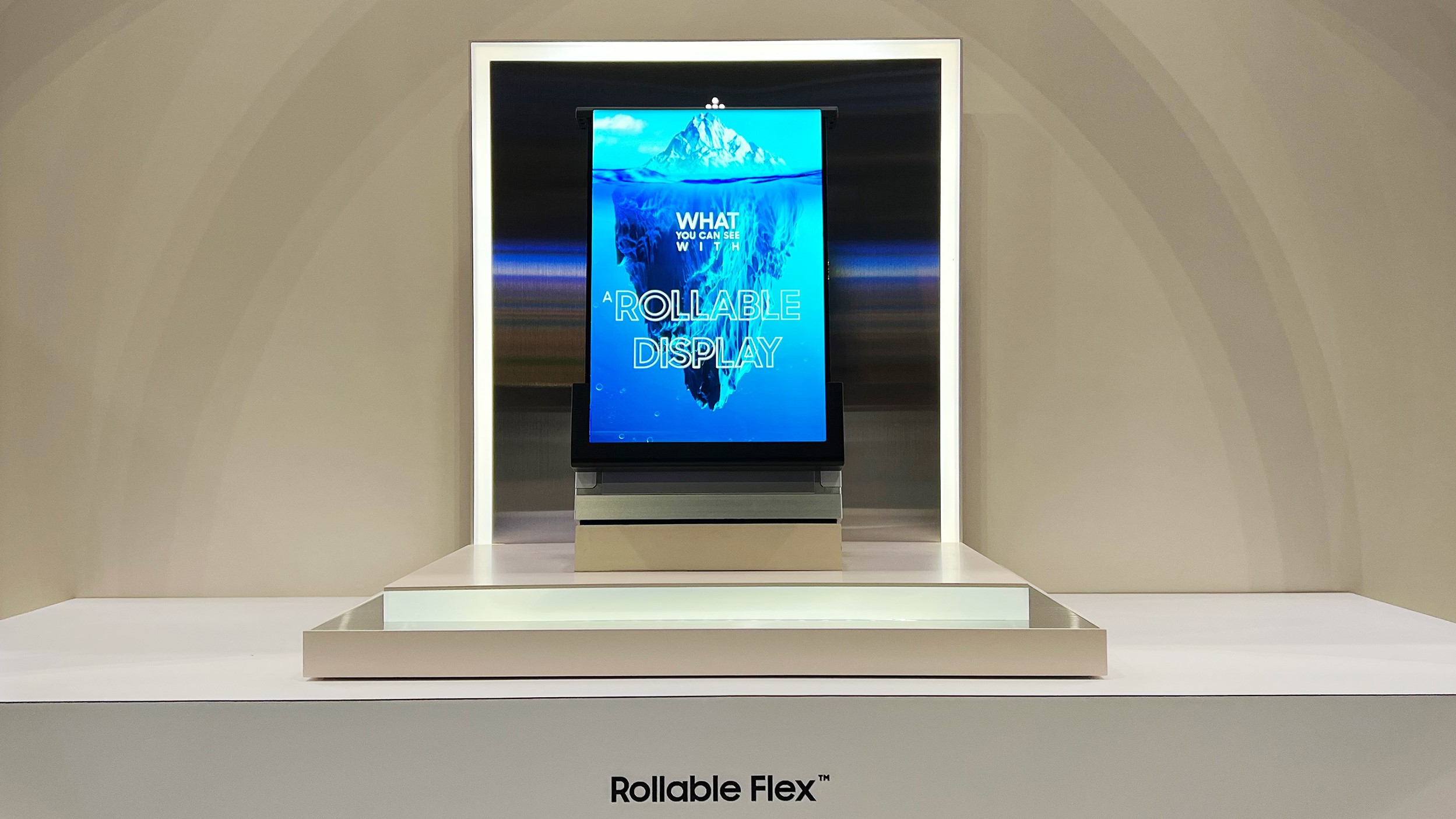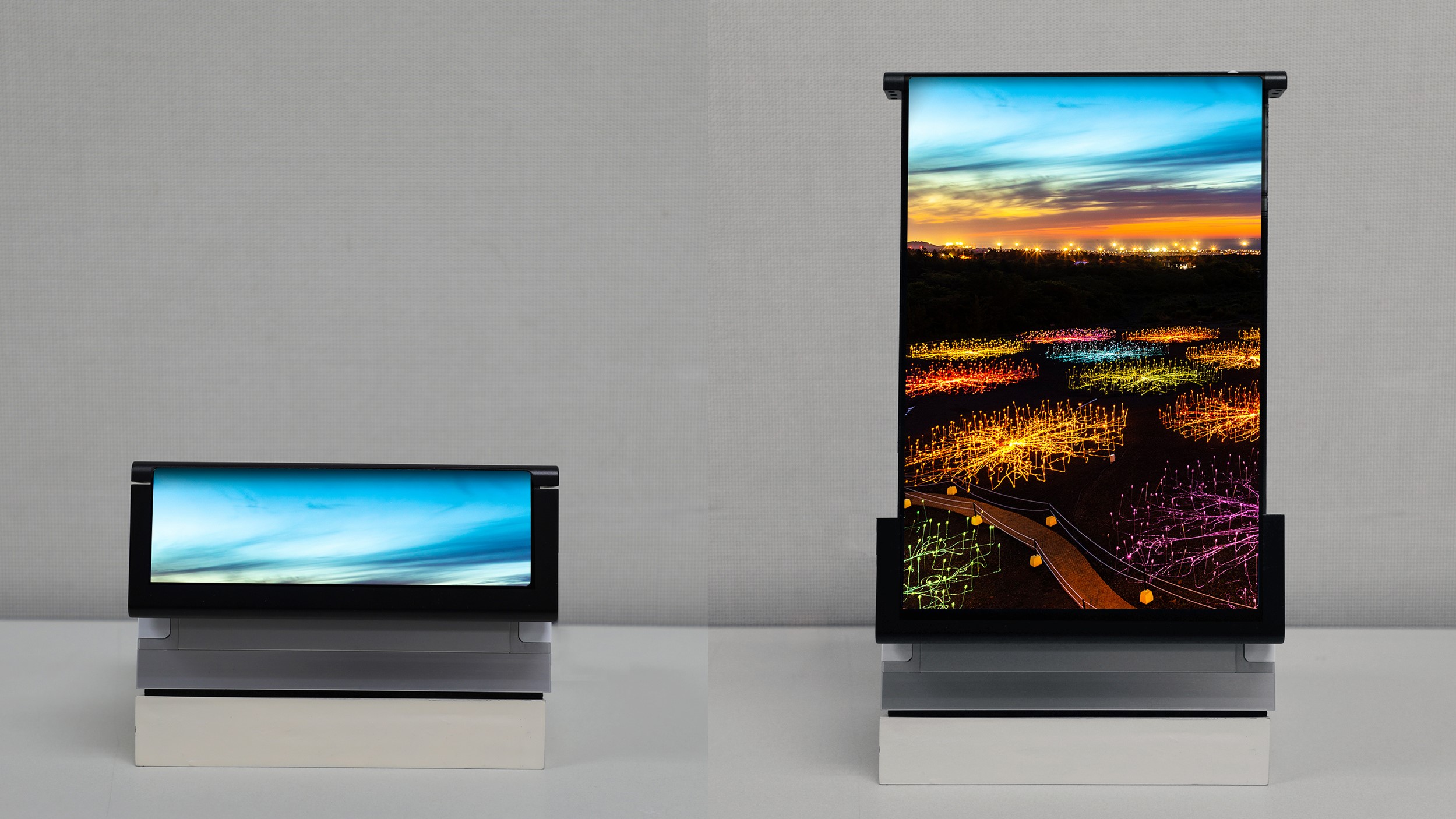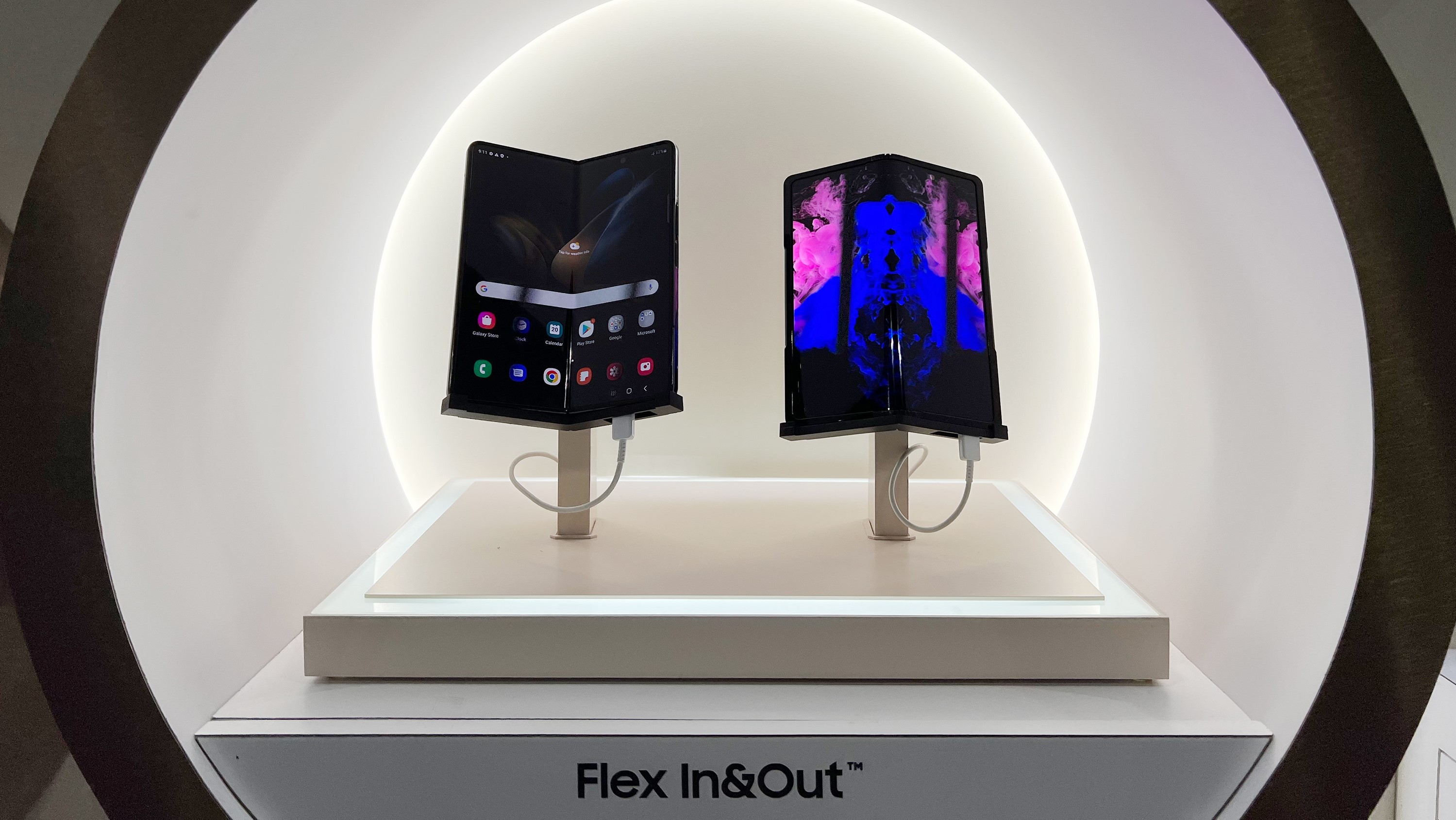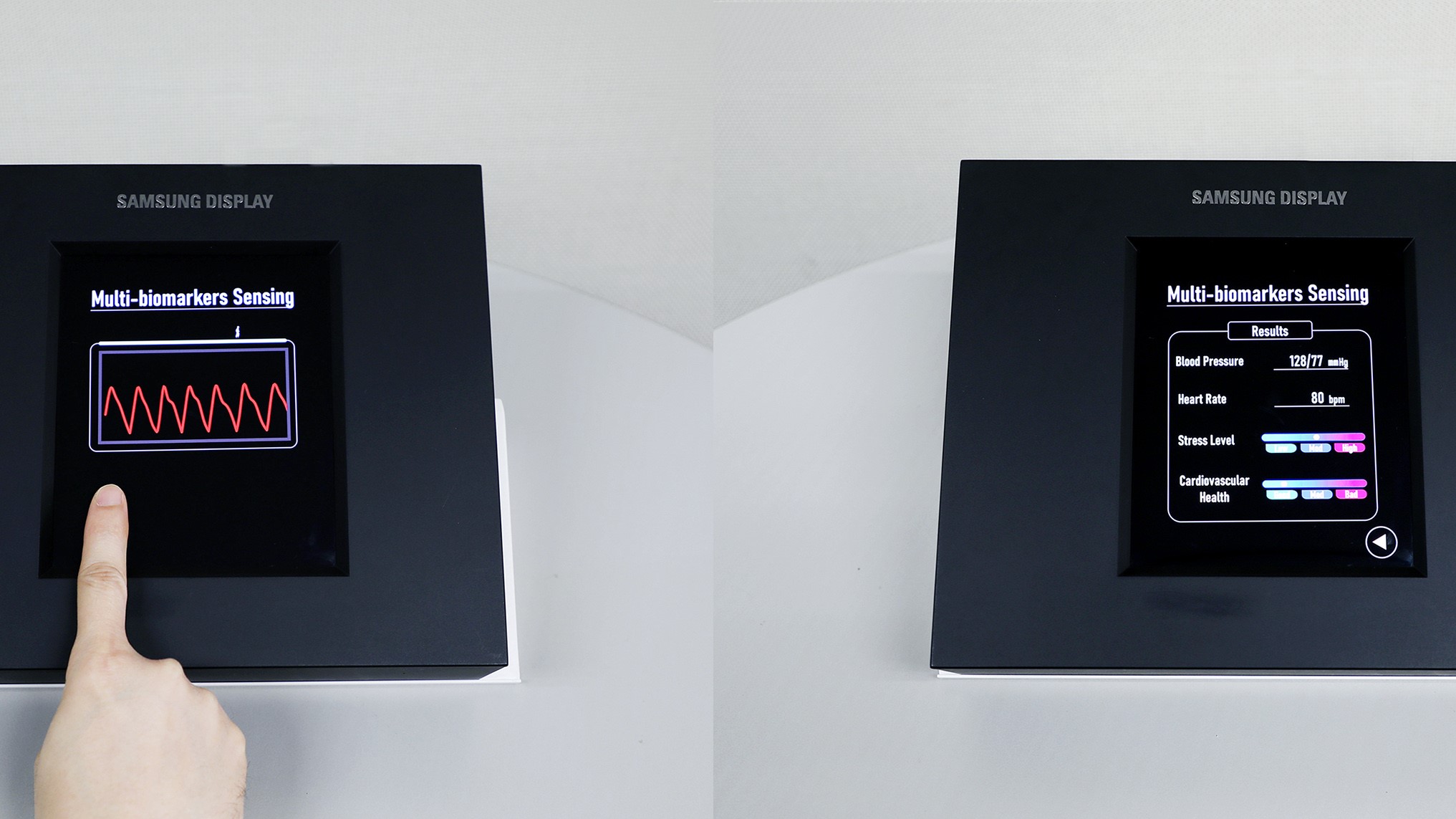Samsung Display previews rollable screens and OLEDs that take your blood pressure
Samsung Display shows off exciting new display concepts

Samsung Display has unveiled a handful of displays that could help to make our phones, tablets, and laptops more portable without reducing their screen size, and a display that can measure your blood pressure.
Currently being demoed at Los Angeles Convention Center in California as part of the SID Display Week 2023, the Rollable Flex display is a new screen that can unfurl like a scroll, morphing from just 1.9 inches long (49mm) to 10 inches (254mm). In a press release, Samsung explains it hopes this new screen can help “turn a difficult-to-carry large-sized display into a portable form factor.”
This is merely a demo right now – it'll likely be a while before a gadget puts Samsung Display’s Rollable Flex panel to use – but in the right hands we could see some interesting designs. Your tablet could roll up into a rod shape for carrying around, for example, and those of us who like a multi-monitor setup could carry a rollable second screen with us to use with our laptops.

Samsung Display is also demoing new folding screen designs that look to be perfect for smartphones – so we may see them used in follow-up devices to Samsung Electronics’ Galaxy Z Flip 4 and Galaxy Z Fold 4, or Google’s recently unveiled Google Pixel Fold.
Flex In & Flex Out is a screen type that can fold both ways. You can fold the screen in and close it like a book – protecting it with the outside case – or you can fold the screen out, so that you can still see the display and use your phone without needing it to be full size.
Samsung explains that this design would eliminate the extra external panel that many foldables rely on so they can be used while folded; without that panel, foldables could become lighter and thinner than the current best foldable phones.

Lastly, Samsung is demoing Flex Hybrid, a screen that combines folding and sliding technologies into one so that you can eek even more screen real estate out of your smartphone.
Get daily insight, inspiration and deals in your inbox
Sign up for breaking news, reviews, opinion, top tech deals, and more.
We don’t yet know when we'll see phones or tablets using these displays, but it likely won't be any time soon – and we can expect any such devices to be on the expensive side based on the currently prices of foldable phones.
A portable OLED biosensor
Beyond improving portability, Samsung Display also unveiled a new Sensor OLED screen that combines an OLED panel with biosensors. The upshot of this is a screen that has fingerprint scanning built-in, where most fingerprint-reading displays require an under-display module for this.

Obviously, you could use this kind of screen to unlock your phone with your fingerprint, but that’s nothing new. The real advantage is that this OLED display can apparently be used to check your cardiovascular health.
When the user places two fingers on the display, it use its light to measure how contracted or relaxed the blood vessels inside the fingers are, and this data can then be used to provide health information. According to Samsung, accurate blood pressure measurements require you to collect data from both arms, “the Sensor OLED display can simultaneously sense the fingers of both hands, providing more accurate health information than existing wearable devices.”
As with the folding screens, Samsung hasn’t said when Sensor OLED will make its way to consumer smartphones – so your phone likely won’t be replacing the health tracking provided by the best smartwatches any time soon.

Hamish is a Senior Staff Writer for TechRadar and you’ll see his name appearing on articles across nearly every topic on the site from smart home deals to speaker reviews to graphics card news and everything in between. He uses his broad range of knowledge to help explain the latest gadgets and if they’re a must-buy or a fad fueled by hype. Though his specialty is writing about everything going on in the world of virtual reality and augmented reality.